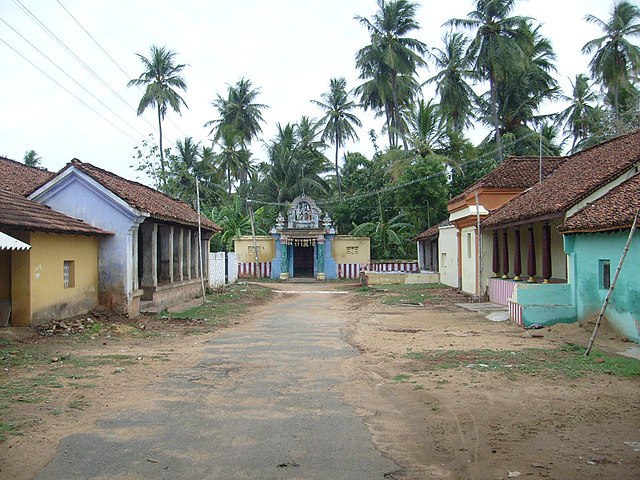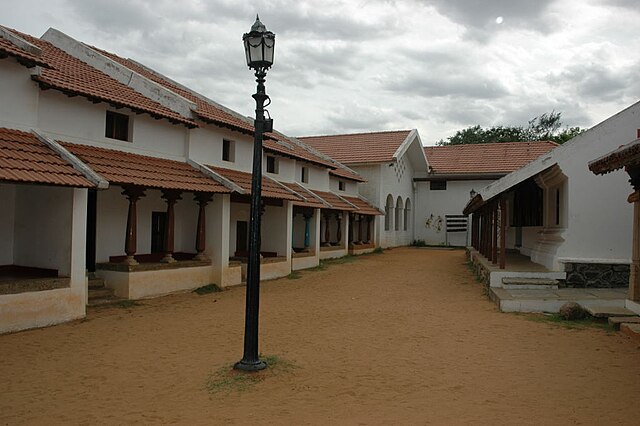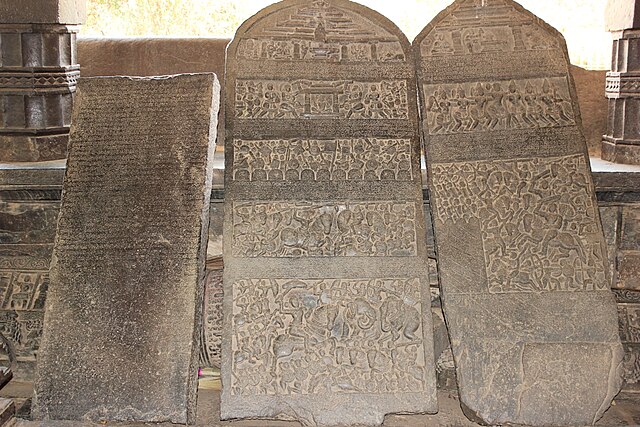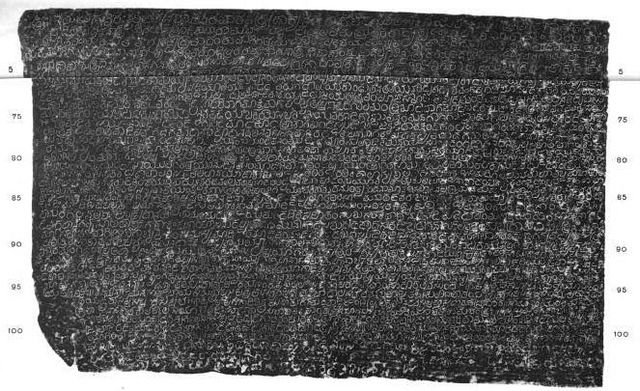An Agraharam or Agrahara was a grant of land and royal income from it, typically by a king or a noble family in India, for religious purposes, particularly to Brahmins to maintain temples in that land or a pilgrimage site and to sustain their families. Agraharams were also known as Chaturvedimangalams in ancient times. They were also known as ghatoka, and boya. Agraharams were built and maintained by dynasties such as the Pandya, Cholas, Kadambas, Pallavas, Vijayanagara and other Deccan dynasties since ancient times.
An Agraharam in Thanjavur District, Tamil Nadu
An Agraharam from Tirunelveli assembled within the DakshinaChitra museum.
Kalpathy Agrahara, Kerala
Kunnamkulam Angady
The Kadambas were an ancient royal family that ruled northern Karnataka and the Konkan from Banavasi in present-day Uttara Kannada district in India. The kingdom was founded by Mayurasharma in c. 345, and at later times showed the potential of developing into imperial proportions. An indication of their imperial ambitions is provided by the titles and epithets assumed by its rulers, and the marital relations they kept with other kingdoms and empires, such as the Vakatakas and Guptas of northern India. Mayurasharma defeated the armies of the Pallavas of Kanchi possibly with the help of some native tribes and claimed sovereignty. The Kadamba power reached its peak during the rule of Kakusthavarma.
The Talagunda pillar Sanskrit Inscription of crown prince Santivarma (c. 450)
The Halmidi inscription at Halmidi village, usually dated 450 CE. is the earliest Kannada inscription issued by the Kadamba Dynasty
Old Kannada inscriptions of Kadamba king Kamadeva of the Hangal branch (c. 1180) and Hoysala king Veera Ballala II (c. 1196) in the open mantapa of the Tarakeshwara temple at Hangal
Old Kannada inscription (1200 AD) of King Kamadeva of the Kadamba dynasty of the Hangal branch








